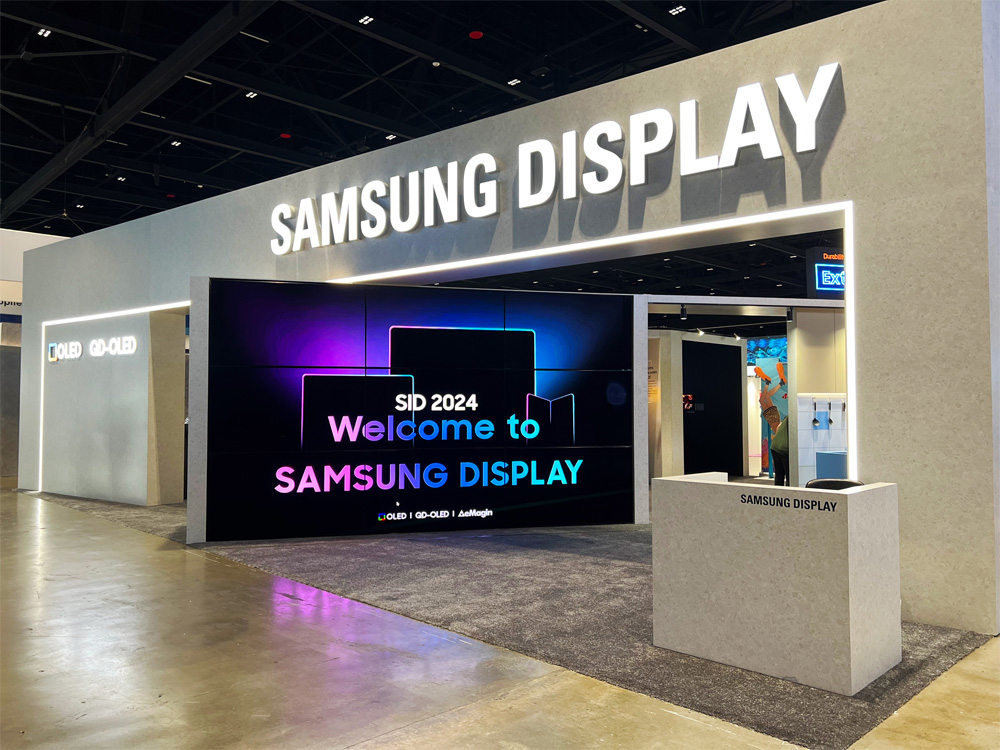
Samsung Electronics’ subsidiary, Samsung Display unveiled some innovative display technologies at the recently concluded SID 2024 expo in San Jose, California. Samsung showed off the industry-first quantum dot light-emitting diode (QD-LED) display, a next-generation self-lighting technology that uses ultra-fine semiconductor particles to create RGB pixels.
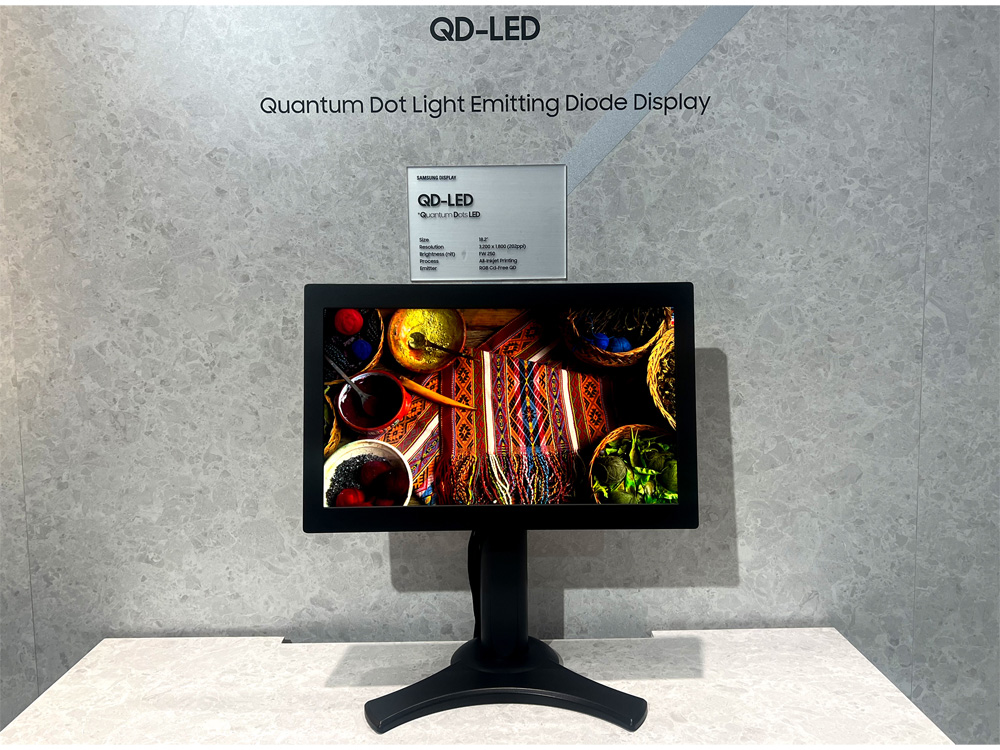
Samsung says QD-LEDs emit light directly from the QD RGB pixels through the current drive without an OLED while the current QD-OLEDs produce color by passing light from a blue OLED through a QD-emitting layer. This results in a wide color gamut and high color accuracy for improved viewing experience and is highly efficient to manufacture due to the stable nature of the quantum dots. The working concept is a notebook-sized 18.2-inch QD-LED with a resolution of 3200󠅐x1800 pixels, high pixel density of 202 PPI and a brightness of 250 nits.
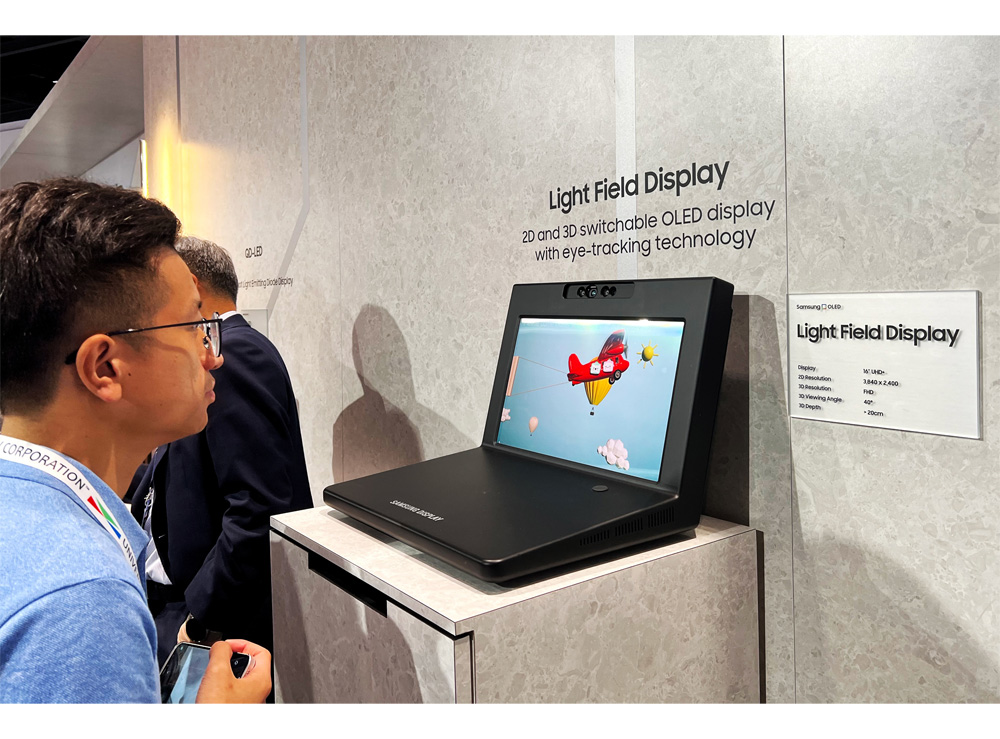
Another noteworthy showcase at Samsung Display’s booth is its Light Field Display (LFD), a type of glasses-free 3D display that automatically switches between 2D and 3D depending on the user’s gaze. According to Samsung, LFD uses display and optical technology to create the illusion of three-dimensionality by allowing the left and right eyes to see different images.
The 16-inch laptop-type LFD automatically turns on the 3D function when the user comes within 40 to 70 centimeters of the viewing distance. LFD’s advanced eye-tracking technology provides FHD-quality content by adjusting the 3D screen in real-time to the user’s eye position within a 40-degree viewing range.
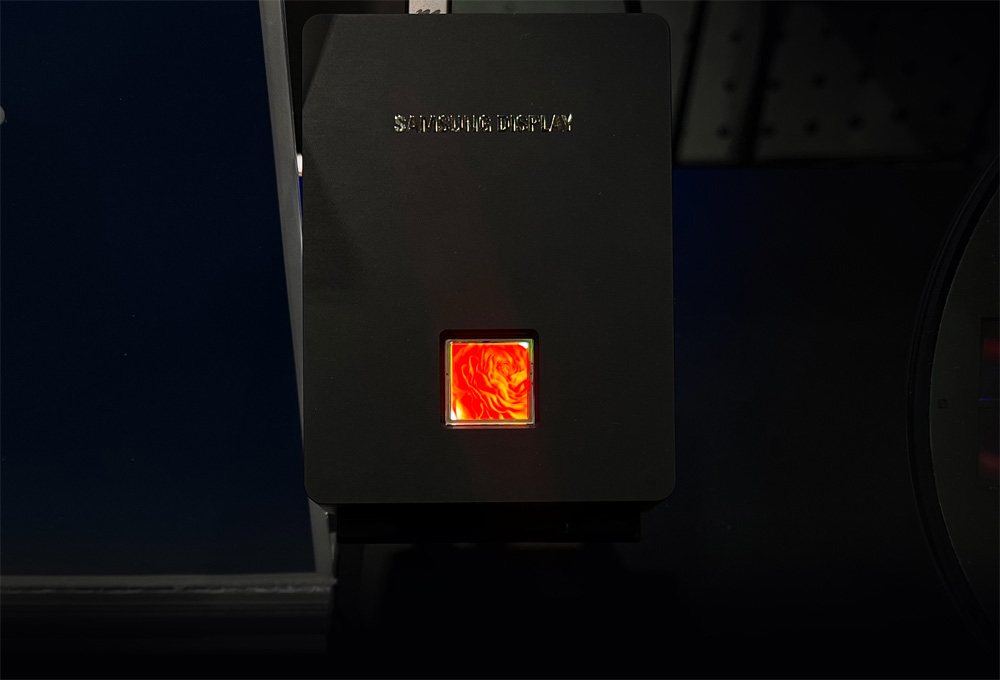
Samsung also showcased a solution for the extended reality (XR) market in the form of RGB OLEDoS (OLED on Silicon) technology. The RGB OLEDoS is based on a fine silicon mask (FSM), which is said to be superior to fine metal masks (FMM) and boasts a pixel density of 3,500 PPI.
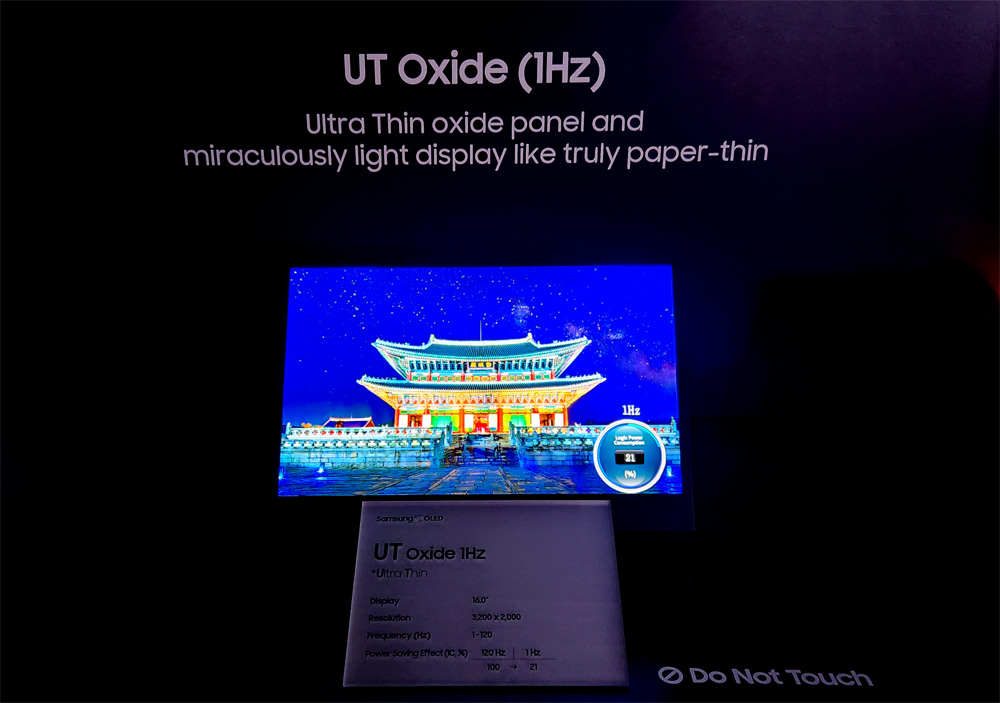
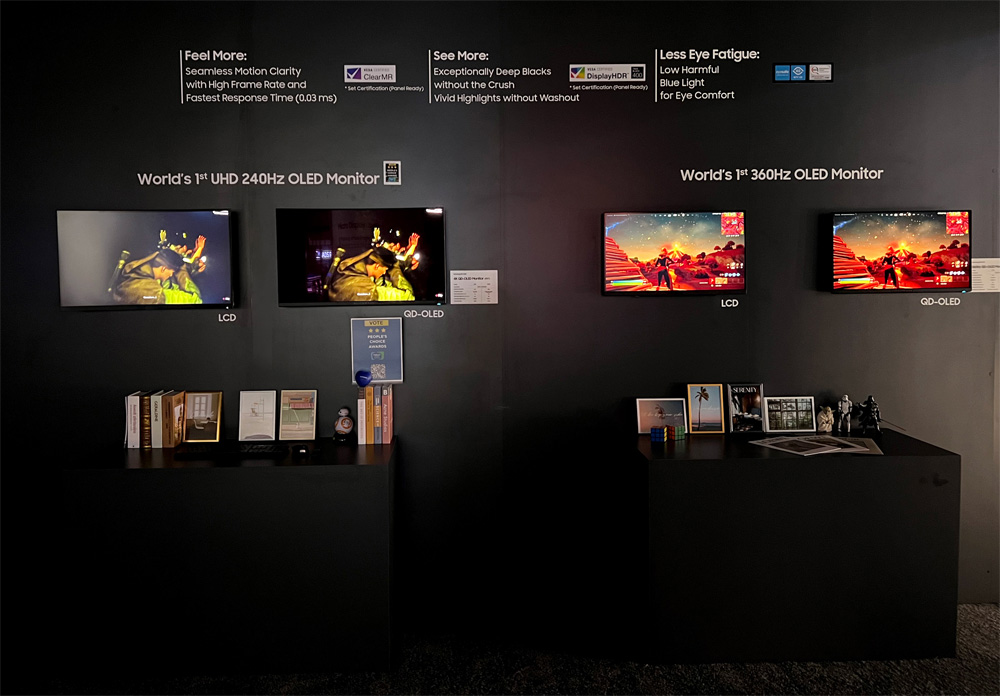
Samsung Display also had other display tech featured like ultra-thin OLED for tablets and laptops that reduces thickness and weight by up to 20 percent and improves battery life; Flex Note Extendable; Flex S that folds two ways; Slidable Flex Duet that extends the screen in two directions; military riflescope featuring OLED; world’s first 4K 31.5-inch and 360 Hz 27-inch gaming QD-OLED monitors; and 65-inch TV panel with a maximum brightness of 3,000 nits.
Leave a Reply